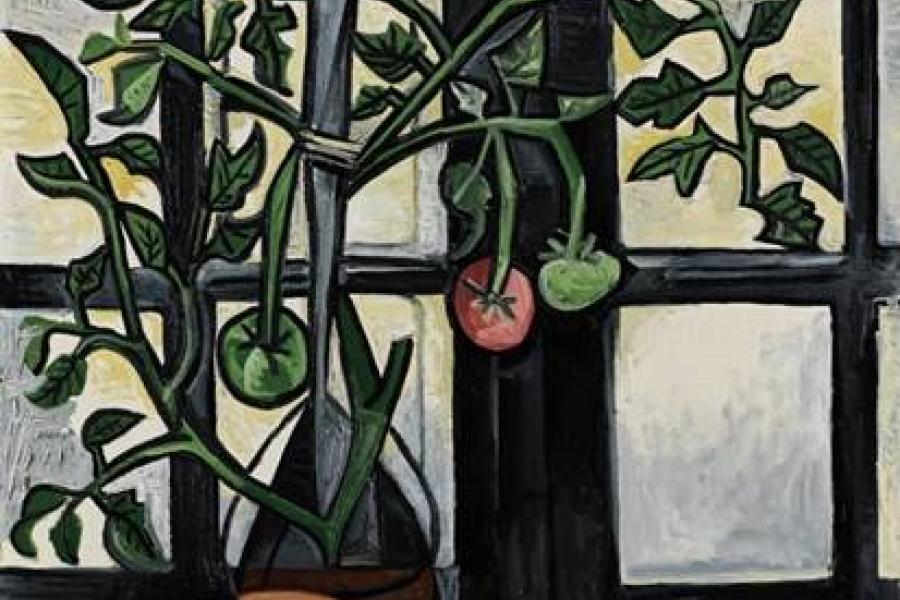Samuel Valette, Sotheby’s Senior Specialist in Impressionist & Modern Art, commented: “This exceptional work by Pablo Picasso was painted at a moment of particular tension during the war: the liberation of Paris. As such, it is infused with a sense of renewed energy and hope that distinguishes it from other wartime still-lifes, which were imbued with a more sombre and dark mood. It shows that there was light at the end of the tunnel. For Picasso, the very act of continuing to paint as normal was an act of resistance, and following the Liberation, his atelier became a must-see for the allied soldiers who wanted to witness what the master had created in the war years.”Symbolic of victory in Europe, Picasso’s series of five paintings of a tomato plant in bloom in the Paris apartment he shared with his lover Marie-Thérèse are ripe with personal as well as wider political and cultural significance – a way of reflecting the spirit of hope and resilience that characterised this time. The most complex and visually striking example from the most sought- after series of the war period, Plant de tomates has been in a private collection for four decades since it was sold at Sotheby’s New York in 1976. This exquisite work is expected to fetch £10,000,000 – 15,000,000 as part of Sotheby’s Impressionist & Modern Art Evening sale in London on 1 March 2017.
In the summer of 1944, Picasso was staying with Marie-Thérèse at the Boulevard Henri IV in the weeks before the Liberation of Paris from the Nazis by the Allied Forces. Picasso began to take notice of the potted tomato plant that was growing besides the window of the apartment. These were not uncommon in civilian households throughout Europe at a time when food rations limited the amount of available produce for consumption. Seeing the resilient plant as a sign of hope as it continued to bear fruit, Picasso painted five canvases of the plant on a window sill between August 3 and August 12, 1944 – varying in degrees of abstraction. Thus he recorded this consequence of war as a source of admiration and a metaphor of human perseverance in times of strife.
In this work, the branches of the plant are weighed down with the heavy tomatoes – their arched shapes standing in contrast with the strong horizontals and verticals of the window, which fragment the composition into a grid-like form. For his palette, Picasso chose vibrant shades of red and green to emphasise the lush and fertile nature of the plant. The background view outside the window is painted with varying shades of yellow and grey, calling to mind the smoke and gunfire that could be heard throughout the city during these frightening last weeks of the war. Rarely has Picasso invested a still-life with such meaning and sociological importance.
Although not an active member of the Resistance movement, Picasso’s artistic activity during the war was deemed as heroic by many of his contemporaries around the world. His art was blacklisted by the Nazi regime and he was not permitted to exhibit his pictures publicly by government decree. However, by this point in his career, Picasso was financially secure and the paintings that he completed during this period remained in his studio – only to be exhibited after the war. A series of photographs that renowned photographer Cecil Beaton took of Picasso’s studio at rue des Grands-Augustins, several of them showing this work, gives remarkable insight into Picasso's work during this period. In the days leading to the Liberation – and in the midst of his painting of the tomato plant series – Picasso met with several British and American journalists and soldiers who wished to praise him for his accomplishment at his studio.
 Pablo Picasso, Plant de tomates, oil on canvas, painted in Paris between 6- 9 August 1944 (est. £10,000,000-15,000,000 - Mit freundlicher Genehmigung von: sothebys.com
Pablo Picasso, Plant de tomates, oil on canvas, painted in Paris between 6- 9 August 1944 (est. £10,000,000-15,000,000 - Mit freundlicher Genehmigung von: sothebys.com